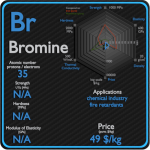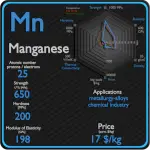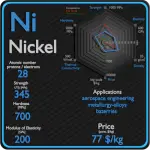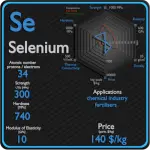This article contains comparison of key thermal and atomic properties of magnesium and zinc, two comparable chemical elements from the periodic table. It also contains basic descriptions and applications of both elements. Magnesium vs Zinc.

Magnesium and Zinc – About Elements
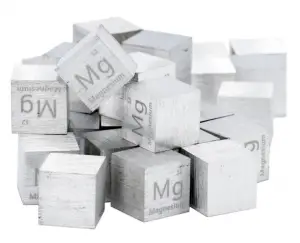

Source: www.luciteria.com
Magnesium and Zinc – Applications
Magnesium
Magnesium is the third-most-commonly-used structural metal, following iron and aluminium.[35] The main applications of magnesium are, in order: aluminium alloys, die-casting (alloyed with zinc), removing sulfur in the production of iron and steel, and the production of titanium in the Kroll process. Magnesium alloys are used in a wide variety of structural and nonstructural applications. Structural applications include automotive, industrial, materials-handling, commercial, and aerospace equipment. Magnesium alloys are used for parts that operate at high speeds and thus must be light weight to minimize inertial forces. Commercial applications include hand-held tools, laptops, luggage, and ladders, automobiles (e.g., steering wheels and columns, seat frames, transmission cases). Magnox (alloy), whose name is an abbreviation for “magnesium non-oxidizing”, is 99% magnesium and 1% aluminum, and is used in the cladding of fuel rods in magnox nuclear power reactors.
Zinc
Corrosion-resistant zinc plating of iron (hot-dip galvanizing) is the major application for zinc. Coating of steel constitutes the largest single use of zinc, but it is used in large tonnages in zinc alloy castings, as zinc dust and oxide, and in wrought zinc products. Galvanized steel is just plain carbon steel that has been coated with a thin zinc layer. The zinc protects iron by corroding first, but zinc corrodes at much lower rates than do steel. Other applications are in electrical batteries, small non-structural castings, and alloys such as brass. A variety of zinc compounds are commonly used, such as zinc carbonate and zinc gluconate (as dietary supplements), zinc chloride (in deodorants), zinc pyrithione (anti-dandruff shampoos), zinc sulfide (in luminescent paints), and dimethylzinc or diethylzinc in the organic laboratory. A key part of the modern materials world in which zinc finds itself is recycling. Zinc, in common with all metals (and unlike synthetic materials) can be recycled indefinitely without degradation.
Magnesium and Zinc – Comparison in Table
| Element | Magnesium | Zinc |
| Density | 1.738 g/cm3 | 7.14 g/cm3 |
| Ultimate Tensile Strength | 200 MPa | 90 MPa |
| Yield Strength | N/A | 75 MPa |
| Young’s Modulus of Elasticity | 45 GPa | 108 GPa |
| Mohs Scale | 2.5 | 2.5 |
| Brinell Hardness | 260 MPa | 330 MPa |
| Vickers Hardness | N/A | N/A |
| Melting Point | 649 °C | 419.53 °C |
| Boiling Point | 1090 °C | 907 °C |
| Thermal Conductivity | 156 W/mK | 116 W/mK |
| Thermal Expansion Coefficient | 24.8 µm/mK | 30.2 µm/mK |
| Specific Heat | 1.02 J/g K | 0.39 J/g K |
| Heat of Fusion | 8.954 kJ/mol | 7.322 kJ/mol |
| Heat of Vaporization | 127.4 kJ/mol | 115.3 kJ/mol |








